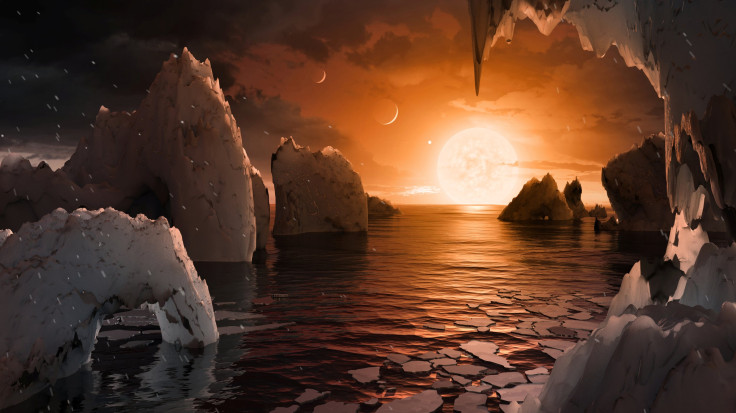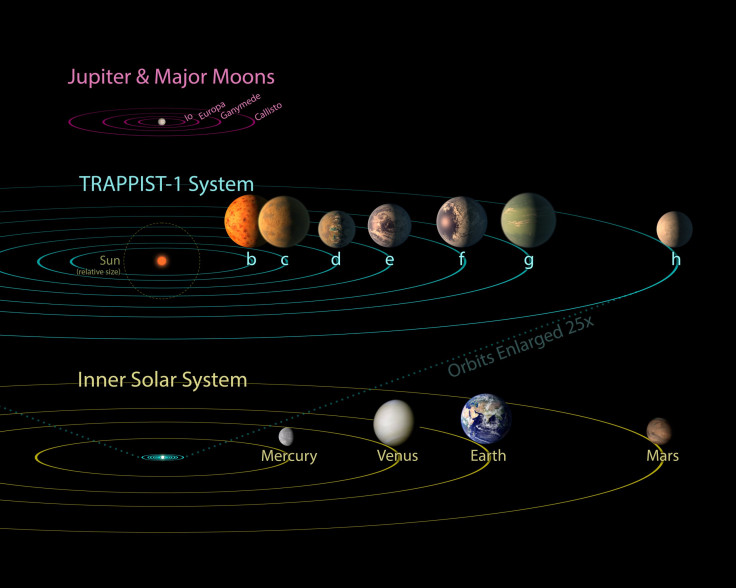New Planets Discovered Like Earth: NASA Commemorates Recent Findings With New Travel Poster That Depicts Life In Space

The announcement of NASA's groundbreaking discovery of seven Earth-like planets Wednesday has inspired newfound interest in the idea of interplanetary exploration and helped highlight the space agency's creative side.
To commemorate the achievement, NASA designed a new vintage-style travel poster dedicated to one of the seven planets of the TRAPPIST-1 system found orbiting around a star about 40 light-years outside of our solar system. The artwork, which portrayed planet TRAPPIST-1e, joined over a dozen other works available to download for free on NASA's online Exoplanet Travel Bureau. The page included stylized depictions and descriptions of 13 other planets including Earth, which was described as “Your Oasis in Space. Where the air is free and breathing is easy.”
"Some 40 light-years from Earth, a planet called TRAPPIST-1e offers a heart-stopping view: brilliant objects in a red sky, looming like larger and smaller versions of our own moon. But these are no moons. They are other Earth-sized planets in a spectacular planetary system outside our own. These seven rocky worlds huddle around their small, dim, red star, like a family around a campfire," the artwork caption read, adding that the planet was voted "Best 'Hab Zone' Vacation" due to its proximity to the central ultracool dwarf star.
Take a trip 40 light-years away to one of the seven Earth-sized planets in the TRAPPIST-1 system.
— NASA (@NASA) February 23, 2017
Download poster: https://t.co/t8N2ZsMXWV pic.twitter.com/CMiNUSGppi
While scientific, much less recreational, travel to the TRAPPIST-1 planets may not yet be viable, the revelation by Belgium's Transiting Planets and Planetesimals Small Telescope and NASA's Spitzer Space Telescope has been described as "the best target yet for studying the atmospheres of potentially habitable, Earth-size worlds," according to Michael Gillion, who led the TRAPPIST-1 research team at University of Belgium.
Follow-up studies have been prepared since the discovery to determine the specific properties of the TRAPPIST-1 planets. Scientists anticipated that the three planets located well in what they determined to be the habitable zone were the most likely to contain liquid water and, therefore, host some form of extraterrestrial life.

© Copyright IBTimes 2024. All rights reserved.












